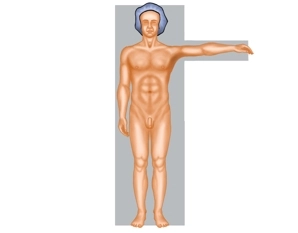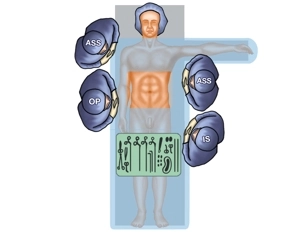• resection of an ampullary The current standard in surgery for malignant tumors of the pancreatic head is Traverso-Longmire pylorus-preserving pancreatoduodenectomy.
Despite the poor overall prognosis of these tumors, surgery is the only potentially curative option.
In principle, if malignancy is present or suspected for good reason, resection of the pancreatic head is always indicated if there is at least the prospect of total tumor resection both preoperatively and intraoperatively, and if the patient is in adequate general condition to withstand this procedure.
The most common malignant tumor of the pancreas is ductal adenocarcinoma (85%), affecting in 65% of cases the pancreatic head.
Other indications:
- Distal cholangiocarcinoma/ampullary carcinoma
- Duodenal carcinoma
- Large ampullary or periampullary duodenal adenomas
- Benign/cystic tumors of the pancreatic head
- Mucinous-cystic neoplasm (>3 cm)
- Solid pseudopapillary neoplasm
- Intraductal papillary mucinous neoplasm (except accessory duct IPMN <2 cm)
- Chronic pancreatitis with complications, in particular with distal CBD stenosis
- “Dilemma” cases (where diagnostic imaging and clinical examination are unable to differentiate reliably between inflammatory and malignant pancreatic head tumor)
- Hereditary gastrinomas in MEN-1 disease (multiple duodenal gastrinomas)
- Pancreatic head metastases
The main difference versus the classic Kausch-Whipple procedure is the preservation of the stomach and its neurovascular supply. There is no difference between these two procedures with regard to mortality, morbidity and oncological radicality. The excision margin for an R0 resection is not the resection margin of the stomach, but that of the posterior, retroperitoneal pancreas.
The benefit of the pylorus-preserving technique is a shorter operating time and less blood loss. Moreover, patients maintaining their physiological ability of gastric emptying do better in terms of absorption, nutrient utilization and postoperative weight gain.
In case of infiltration of large veins (superior mesenteric vein, splenic vein or portal vein), resection should be attempted, if necessary with vascular reconstruction, since preoperative diagnostic work-up generally cannot differentiate between inflammatory adhesions and tumor infiltration. Patients appear to benefit from vascular resection if R0 resection is successful.
Given the current limited study data, the resection of visceral arteries to achieve R0 resection is at the discretion of the surgeon.
The indication for surgical resection is determined shortly after diagnosis, particularly in case of a potentially resectable finding in icteric patients. Preoperative endoscopic bile duct drainage should only be considered in patients with manifest secondary complications of jaundice (impaired plasmatic coagulation, liver synthesis disorders, reduced cellular defenses, purulent cholangitis) to gain time and assure better baseline conditions for surgery. In all other cases, preoperative bile duct drainage, whether TPCD (transpapillary cholangiographic drainage) or PTCD (percutaneous-transhepatic cholangiographic drainage), should be avoided due to the increased postoperative morbidity.
Comorbidity is another important factor when determining the indication. Patients with severe cardiovascular comorbidities run a significantly increased risk of surgical complications. Nowadays, old age in itself is no longer a contraindication for resection of the pancreatic head.
For locally advanced tumors of questionable resectability, neoadjuvant radiochemotherapy can be attempted (if possible in trial settings) to allow resection with curative intent.
Lymphadenectomy targets the regional lymph nodes of the duodenum and pancreatic head. More extensive lymphadenectomy does not improve survival. Therefore, extended lymph node dissection is controversial because of the higher complication rate. Vascular skeletonization along the aorta and superior mesenteric artery with resection of nerve tissue can result in persistent gastric emptying disorders and severe diarrhea and malnutrition.
The case in the video involves oncological carcinoma.


